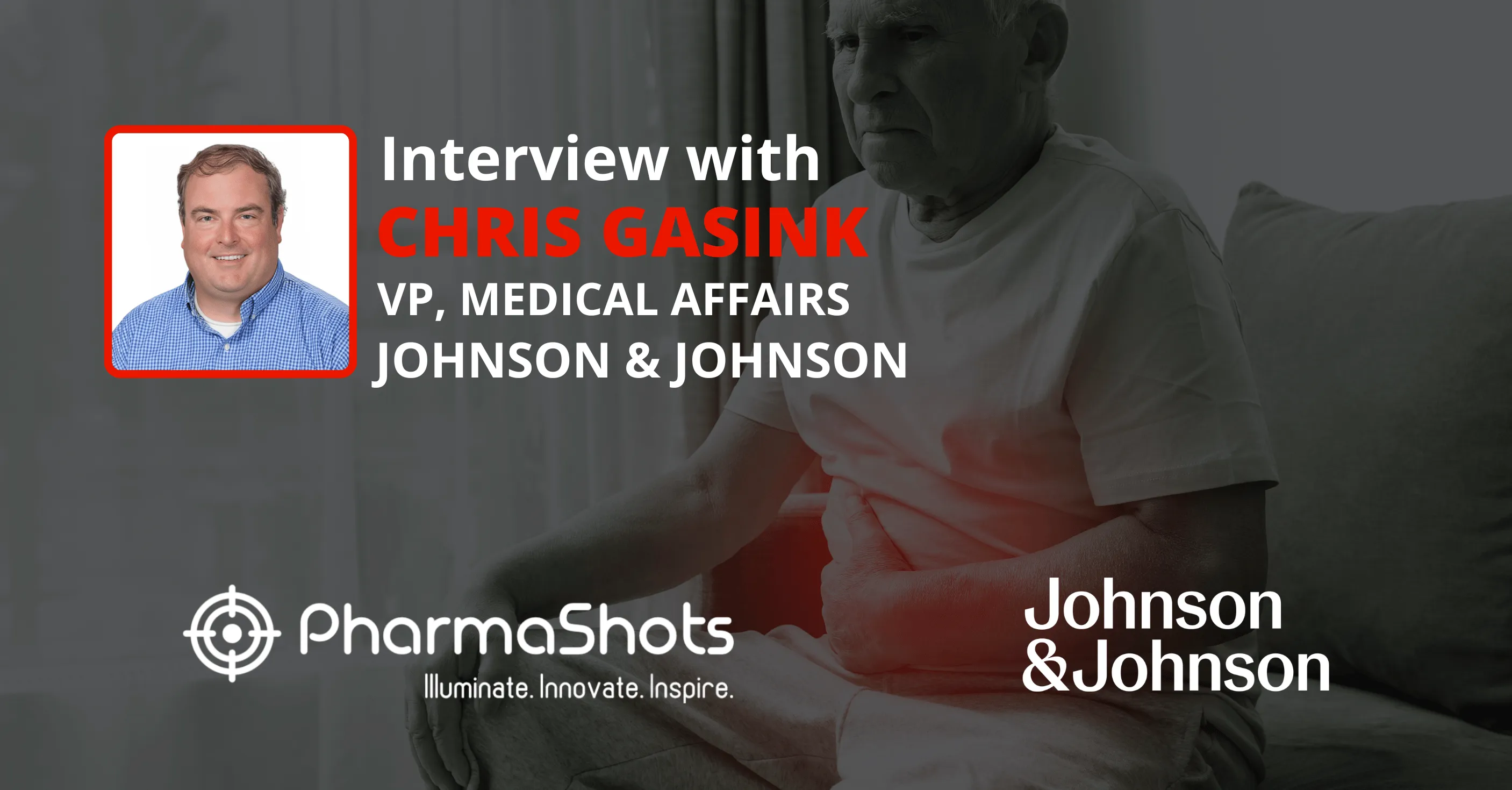
SEA Management with Fasenra: David Jackson & Fasenra Team (AZ) Share Insights from the SHAMAL P-IV Study
Shots:
-
David Jackson and AstraZeneca’s Fasenra Team, in an engaging conversation with PharmaShots highlight the key findings from the SHAMAL P-IV study
-
SHAMAL is the first-ever prospective study that investigated the potential of targeted biologic treatment to enable a significant step down of inhaled corticosteroid (ICS) therapy in severe asthma patients
-
SHAMAL showcased that ICS therapy reduction is possible with benralizumab, a significant step in moving patients away from long-term high-dose ICS usage
Saurabh: Please elaborate on the key details (MOA, ROA, formulations, etc.) of Fasenra (benralizumab).
David: Benralizumab is a monoclonal antibody that binds directly to IL-5 receptor alpha on eosinophils and attracts natural killer cells to induce rapid and near-complete depletion of eosinophils via apoptosis (programmed cell death).
Benralizumab is administered subcutaneously. The recommended dose is 30 mg administered once every four weeks for the first three doses, then every 8 weeks thereafter.
Benralizumab is currently approved as an add-on maintenance treatment for severe eosinophilic asthma (SEA) in the US, EU, Japan and other countries, and is approved for self-administration (via the Fasenra Pen auto-injector) in the US, EU and other countries.
Saurabh: Please highlight the study design of the P-IV (SHAMAL) trial in severe eosinophilic asthma patients.
David: SHAMAL is the first-ever prospective trial to investigate the potential of a targeted biologic treatment to enable a significant step down of inhaled corticosteroid (ICS) therapy in severe asthma patients.
SHAMAL was a multicentre, randomised, open-label, parallel group, active-controlled, Phase IV trial. It was designed to assess the reduction of daily maintenance ICS/LABA treatment to anti-inflammatory reliever treatment only in patients with SEA treated with benralizumab.
Patients were randomised to tapering of high dose ICS/LABA [n=168] or stable dosing [n=43] in a 3:1 ratio for a reduction period of 32 weeks, and a 16-week maintenance period.
The primary endpoint was the proportion of patients who reduced their ICS/LABA maintenance dose while maintaining asthma symptom control to either medium-dose Maintenance and Reliever Therapy (MART), low-dose MART, or ICS/LABA as needed, at the end of the reduction period (week 32).
SHAMAL was conducted at 22 study sites in four countries – the UK, France, Italy and Germany.
Saurabh: Please provide key findings from the P-IV (SHAMAL) trial and highlights from new Fasenra data published in The Lancet.
David: This is the first prospective study to demonstrate that a targeted biologic can enable a reduction in background therapy (high-dose ICS) while maintaining disease control, with the majority of patients remaining exacerbation-free.
-
Almost all (92%) patients were able to reduce ICS dose with no meaningful changes in symptom control.
-
91% of patients in the reduction group had zero exacerbations during tapering.
-
There were no meaningful changes in symptom control.
SHAMAL shows that ICS therapy reduction is possible with benralizumab, a significant step in moving patients away from long-term high dose ICS usage. Results offer the potential for patients to safely reduce medication burden.
Saurabh: Long-term corticosteroids (ICS) use is very common worldwide for managing asthma symptoms. How can this data change the current clinical care approach for severe eosinophilic asthma patients?
David: Concerns have been raised regarding prolonged use of high-dose ICS, with some evidence showing dose-related increased risks of adverse events, including adrenal suppression, cataracts, osteoporosis-related fractures, and diabetes.
SHAMAL shows that ICS therapy reduction is possible with benralizumab, with almost all (91%) of patients remaining exacerbation-free during tapering. These data are a significant step in moving patients away from long-term high dose ICS usage, offering potential for patients to safely reduce medication burden.
GINA recommends that a careful step-down of ICS therapy should be considered in patients with severe asthma if symptom control, exacerbations and lung function respond to treatment with a biologic medicine. SHAMAL provides clear guidance on how to step-down maintenance treatment while maintaining asthma control.
Saurabh: Do you believe the P-IV (SHAMAL) trial can be used as strong evidence to support The Global Initiative for Asthma (GINA) recommendations of ICS dose reduction if severe asthma patients respond positively to biologics?
David: GINA recommends that physicians reduce ICS doses in patients with severe asthma who respond positively to biologics; however, to date, there have been no prospective data available supporting this recommendation.
SHAMAL was designed to address the evidence gaps and provide clear guidance on how to step-down maintenance treatment while maintaining asthma control.
SHAMAL shows that ICS therapy reduction is possible with benralizumab, a significant step in moving patients away from long-term high dose ICS usage, and offers critical evidence for the potential for patients to safely reduce medication burden.
Saurabh: What are your plans regarding Fasenra (benralizumab)? Are there any indications of expansion or collaboration deals in the pipeline for taking Fasenra to a larger target patient population across the globe?
AstraZeneca's Fasenra Team: Fasenra continues to be evaluated in SEA, as well as in other diseases that may be driven by eosinophilic inflammation including eosinophilic granulomatosis with polyangiitis (EGPA), hypereosinophilic syndrome (HES), and some patients with chronic obstructive pulmonary disease (COPD) and chronic rhinosinusitis with nasal polyps (CRSwNP) [for more on benralizumab’s clinical development programme https://www.astrazeneca.com/our-therapy-areas/pipeline.html#respiratory].
We’re also on track to bring biologics to China, a large underserved market. Regulatory filing for Fasenra has been submitted, with a regulatory decision expected H2 2024.
Studies like SHAMAL are one part of our overall ambition as a company to make remission a treatment goal for every patient with severe asthma—a goal that will dramatically shift how these patients are treated today.
Saurabh: AstraZeneca chose The Lancet to take this data to the relevant scientific community. Which other journals, publications and platforms are you considering taking this data worldwide?
AstraZeneca's Fasenra Team: SHAMAL is a milestone in asthma care and AstraZeneca will continue to share additional data from SHAMAL and other Fasenra studies at upcoming medical meetings and with scientific and regulatory communities where relevant.
Image Source: Canva
About the Author:

David Jackson
David Jackson is a consultant in severe asthma and eosinophilic lung diseases and the clinical lead for Guy’s hospital severe asthma centre.
David moved from a clinical academic position within the National Heart and Lung Institute at Imperial College to take over leading and developing the severe asthma service at Guy’s and St Thomas’ NHS Foundation Trust in 2015.
Related Post: Neurogenerative Disorders Management: Richard Stefanacci of TauRx in an Enlightening Conversation with PharmaShots
Tags

Saurabh is a Senior Content Writer at PharmaShots. He is a voracious reader and follows the recent trends and innovations of life science companies diligently. His work at PharmaShots involves writing articles, editing content, and proofreading drafts. He has a knack for writing content that covers the Biotech, MedTech, Pharmaceutical, and Healthcare sectors.














